Given that they look strikingly similar to one another, you may be wondering how to tell poison hemlock vs wild carrot apart. Which of these wild and invasive plants is edible, and how can you learn to identify one of the most poisonous plants in North America? Whether you are a wild forager or simply want to manage the weeds growing in your backyard, you’re in the right place.
In this article, we will compare and contrast poison hemlock and wild carrot so that you can fully understand the differences between them. We will go over the physical description of these plants so that you can safely identify them, along with where they grow best and what they are typically used for.
Let’s get started!
Comparing Poison Hemlock vs Wild Carrot
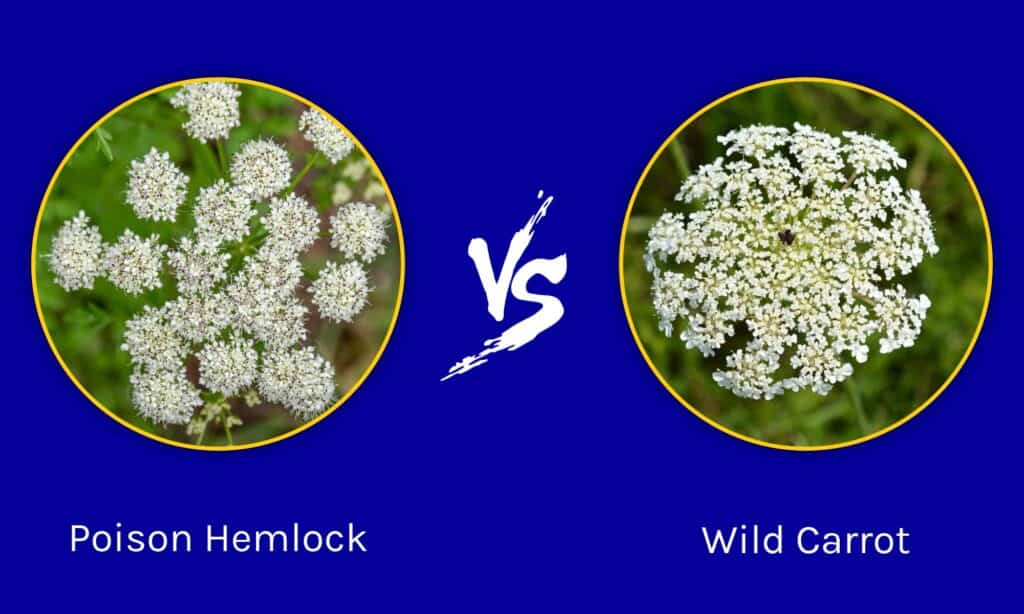
| Poison Hemlock | Wild Carrot | |
|---|---|---|
| Plant Classification | Conium maculatum | Daucus carota |
| Description | Reaches up to ten feet tall and sprouts delicate white flowers in umbel shapes. Leaves are triangular, intricate, scalloped, and not hairy. Stems have unique purple spots on them and are also not hairy | Reaches up to five feet tall and sprouts one large umbellifer per stem. The leaves are intricate, with rounded edges and hair on the undersides. The stems are hairy as well, and the white umbel flowers have a dark spot in the center of the whole umbel |
| Uses | Very few uses, given how poisonous it is; a noxious weed in most locations | Considered a noxious weed by some, but a beloved wildflower by others. Some medicinal and culinary uses |
| Origin and Growing Preferences | Native to Europe; prefers to grow in moist soil and along rivers or near farmland. Very hardy and invasive | Native to Eurasia; prefers full sunlight and moist soil. Hardy to a point, but may not grow well in flooded or highly trafficked areas |
| Best Way to Identify | Look for the purple spots on its stems and stay away! | Look for the large flowering umbellifers, and a dark center dot in each umbrella! |
Is Wild Carrot Toxic?
When handling wild carrots, it’s essential to exercise caution since they have a striking resemblance to poison hemlock, a highly poisonous plant. Wild carrots carry mild toxicity for livestock.
The root of the wild carrot is edible, but it tends to be smaller and tougher than cultivated varieties. People typically consume it when it’s young, or they roast, dry, and grind it into a powder. The seeds of the wild carrot are used as a seasoning in stews, and the flower heads can be lightly battered and deep-fried for a tasty treat.
Additionally, contact with the sap of wild carrot leaves can lead to phytophotodermatitis, a skin rash triggered when the skin comes into contact with the sap and is subsequently exposed to sunlight.
Key Differences Between Poison Hemlock vs Wild Carrot
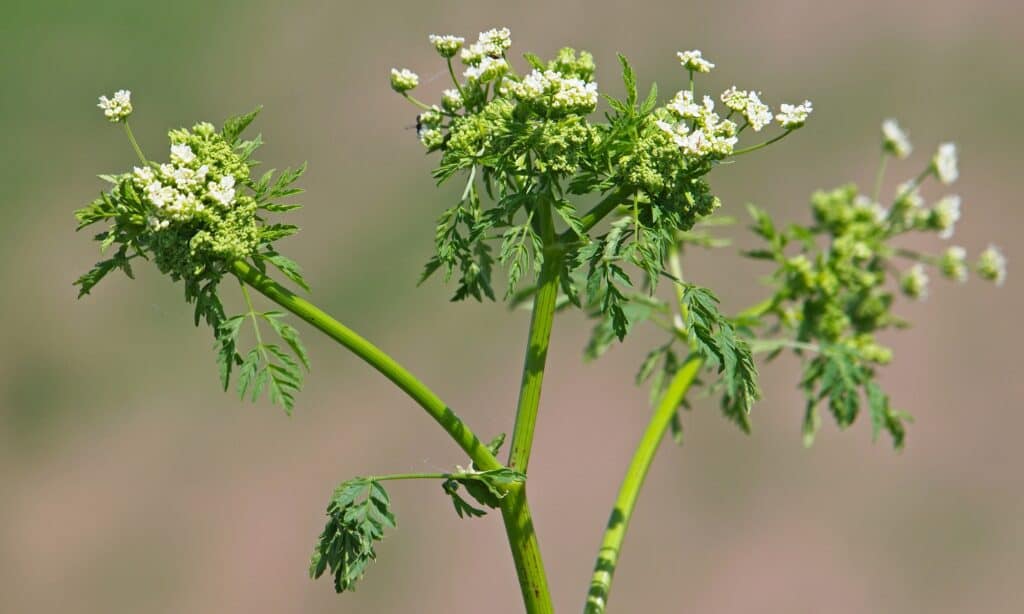
Wild carrot leaves and stems have small hairs present on them, but poison hemlock plants remain smooth and hairless.
©iStock.com/emilio100
There are a number of key differences between poison hemlock and wild carrot. For example, poison hemlock and wild carrot are from the same plant family, but very different genuses. The poison hemlock plant grows taller than the average wild carrot plant. In addition, wild carrot plants are edible, while poison hemlock is extremely poisonous. Finally, wild carrot plants are more hairy compared to poison hemlock plants.
Let’s go over all of these differences in more detail now.
Poison Hemlock vs Wild Carrot: Classification
There are enough undeniable similarities between poison hemlock and wild carrot that it should be unsurprising to hear that they are related to one another. They both belong to the Apiaceae family, known for its umbels, but poison hemlock belongs to the Conium genus, while wild carrot belongs to the Daucus genus. This makes them related in some ways, but they are classified very differently from one another because of this.
Poison Hemlock vs Wild Carrot: Description
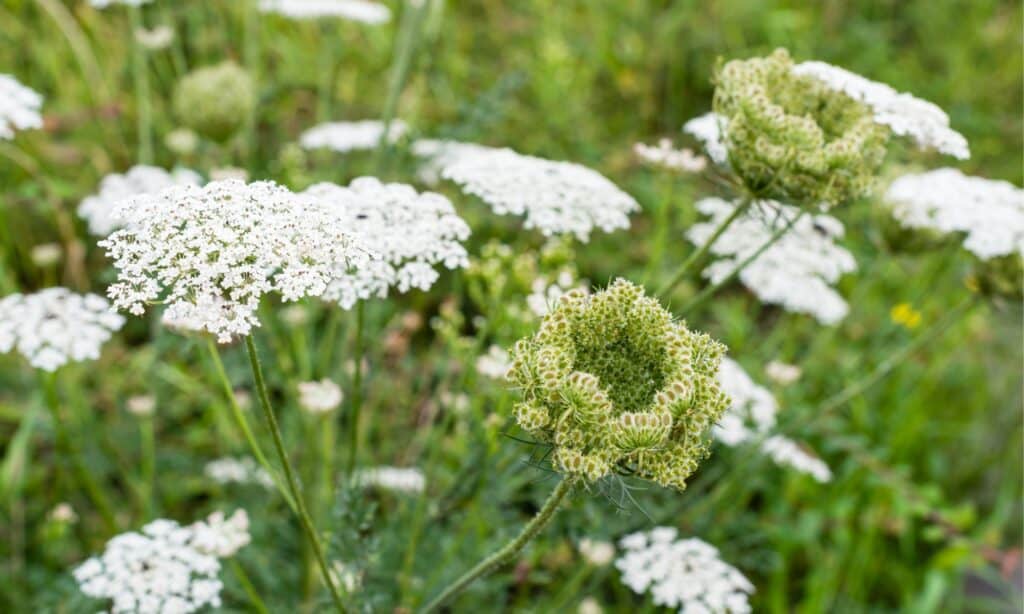
Poison hemlock plants grow up to 10 ft tall on average, while wild carrot plants only reach 5 feet tall on average.
©iStock.com/RuudMorijn
Given that one of these plants is edible and one of them is extremely poisonous, you likely want to know how to best identify them from each other. Thankfully, there are a few key things to pay attention to if you are trying to identify poison hemlock and wild carrots, respectively. For example, poison hemlock plants grow up to 10 feet tall on average, while wild carrot plants only reach 5 feet tall on average.
The leaves of the poison hemlock plants are intricate and triangular with scalloped edges, while wild carrot leaves are similarly intricate, but less intricate compared to poison hemlock leaves. In addition, wild carrot leaves and stems have small hairs present on them, but poison hemlock plants remain smooth and hairless.
The umbels found on poison hemlock plants are more spread out and have more stems compared to the centralized umbel flowers grown on wild carrots. Finally, wild carrot umbels have a dark dot in the center of them, while poison hemlock plants do not have this.
Poison Hemlock vs Wild Carrot: Uses
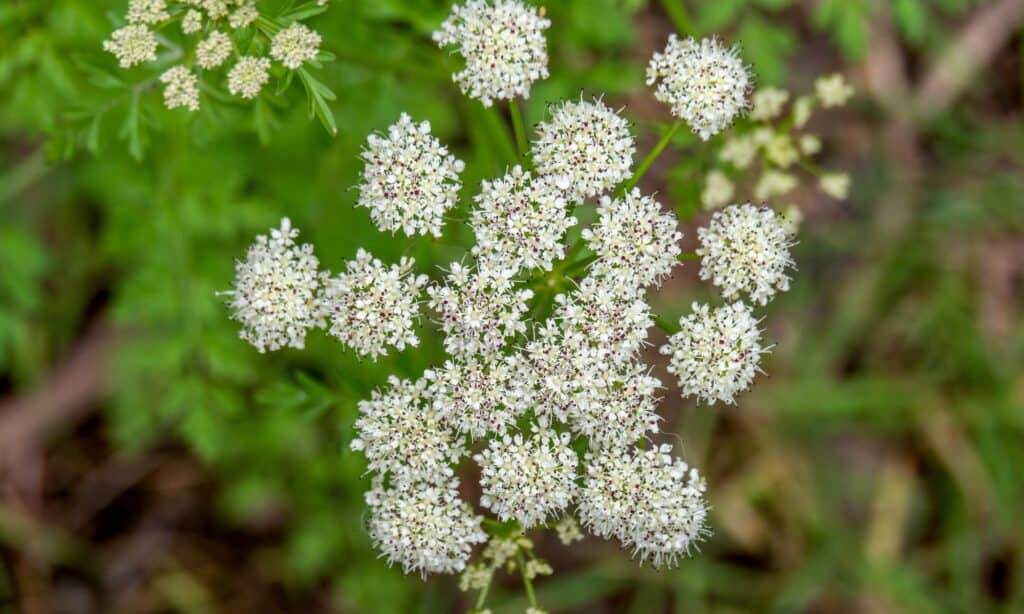
Poison hemlock prefers more moisture and can handle a more heavily trafficked area compared to the more delicate wild carrot plant.
©iStock.com/Goldfinch4ever
There are some obvious differences in the uses of poison hemlock and the uses of wild carrot. While both of these plants are considered noxious weeds in a number of places, poison hemlock is toxic to both humans and animals, while wild carrot plants are edible and often grown in medicinal gardens.
Poison Hemlock vs Wild Carrot: Origin and How to Grow
Despite them looking similar to one another, poison hemlock and wild carrot have different origins and growing preferences. For example, poison hemlock is native to Europe, while wild carrot is native to Eurasia. Both of these plants grow in a variety of full-sun locations and are considered hardy overall, but poison hemlock prefers more moisture and can handle a more heavily trafficked area compared to the more delicate wild carrot plant.
Poison Hemlock vs Wild Carrot: Best Way to Identify
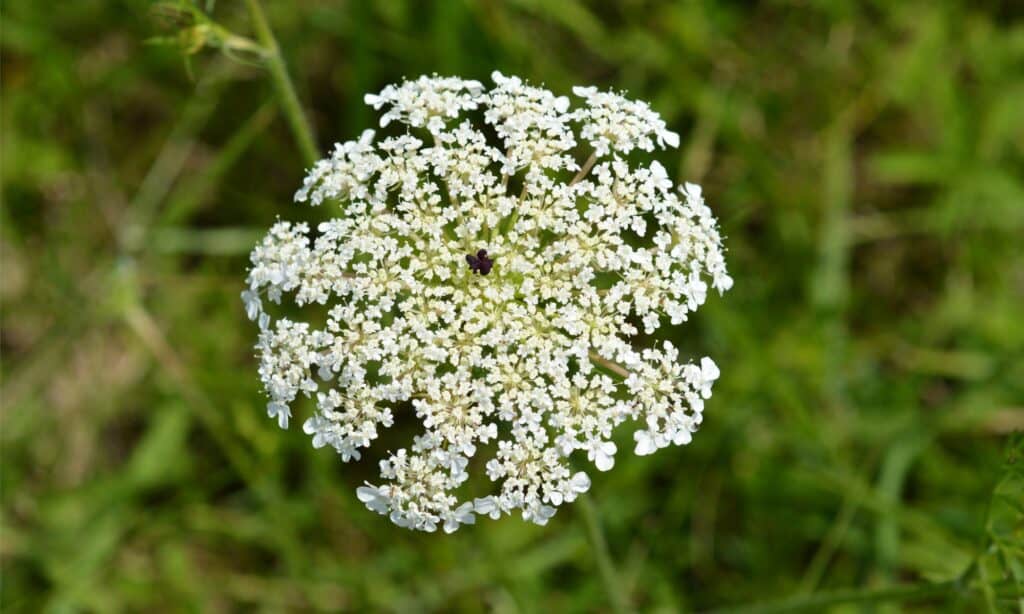
Wild carrot has a unique dark spot in the center of its pure white umbel flowers, something that poison hemlock does not share.
©iStock.com/Nahhan
Given that poison hemlock is poisonous and wild carrot is not, you may be seeking some of the best ways to identify these plants if you are on the trail or foraging in the wild. Thankfully, there are a few key things to keep an eye out for. The best way to tell whether or not you are looking at a poison hemlock plant is to look at the stem. Poison hemlock has purplish spots on its stem, while wild carrot does not have any spots.
However, wild carrot has a unique dark spot in the center of its pure white umbel flowers, something that poison hemlock does not share. If you are hoping to identify wild carrot, one of the best ways to do this is to find the dark purple or red spots nestled in the center of all of these beautiful little flowers!
The photo featured at the top of this post is © iStock.com/emilio100
Sources
- The antioxidant and anticancer effects of wild carrot oil extract, Available here: https://onlinelibrary.wiley.com/doi/abs/10.1002/ptr.4776
- Poison hemlock (Conium maculatum L.), Available here: https://www.sciencedirect.com/science/article/pii/S0278691504001309
Thank you for reading! Have some feedback for us? Contact the AZ Animals editorial team.






